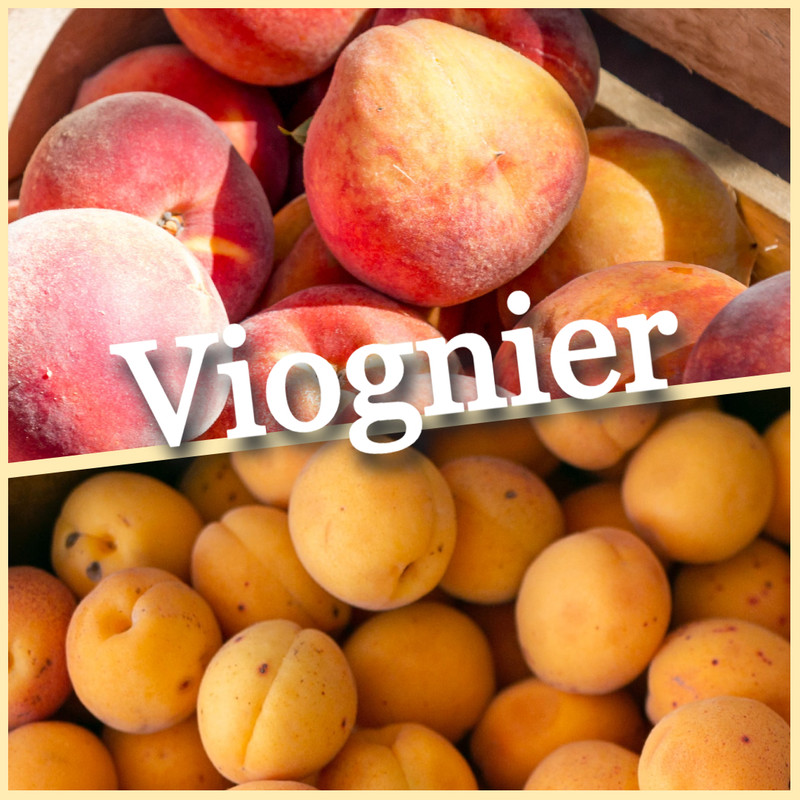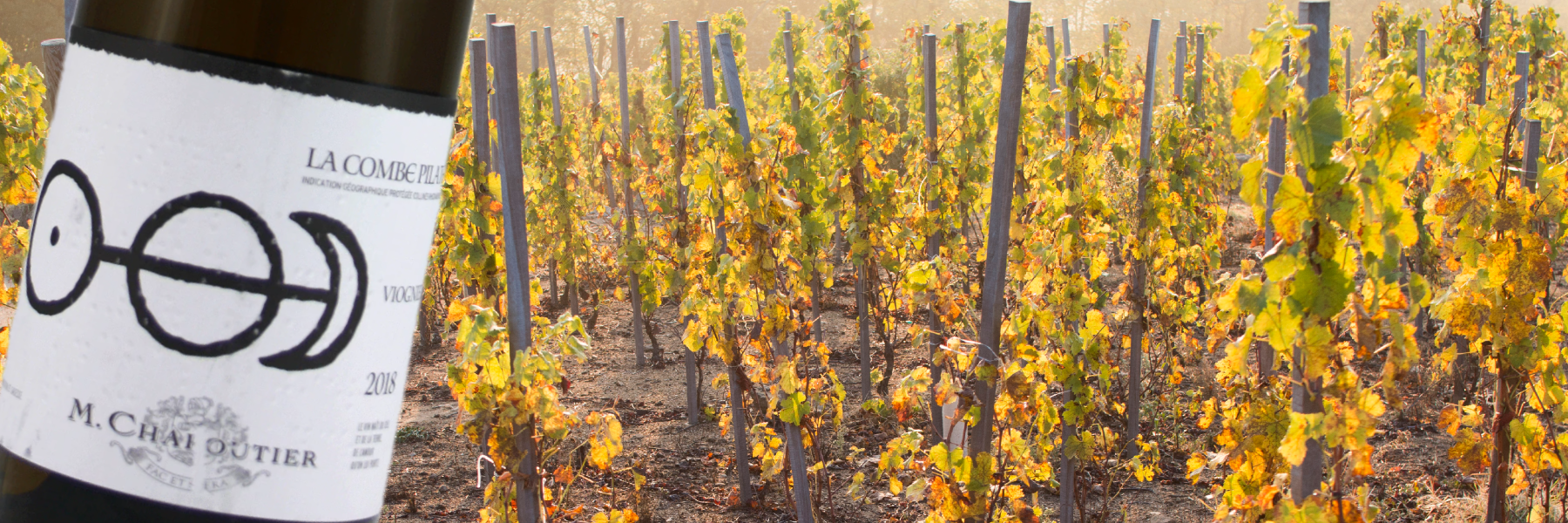Shh …can you keep a secret?
There’s a grape out there that most people can’t even pronounce and it’s going to be the “next big thing” according to a growing number of imbibers!
It’s Viognier and it’s pronounced, Vee-own-yay.
Almost extinct, 50 years’ ago in France, Viognier has been rescued by a very small group of dedicated growers in the northern Rhone appellations of Chateau Grillet (single property) and Condrieu. A difficult vine to work successfully, and very often grown only on steep slopes, or terraces, the vines had to be 100% hand-tended and were just uneconomic to grow as the scale of production demanded high wine prices that no-one, until recently, was prepared to pay.
Very aromatic, with floral notes of jasmine and honeysuckle, the best wines often have a luscious, full-bodied palate, with rich, intense flavours of stone fruits (peach, apricot, nectarine), combined with pithy citrus (tangerine & orange peel) and tropical notes of mango and guava. Really good ones will also have a fine streak of acidity and a stony/mineral texture that is incredibly refreshing to taste! Most are dry, but, occasionally, a sweet version is also made.
Badly made Viognier is either tasteless, or fat & blowsy, with a “hot” alcoholic burn. You don’t want to bother with either of those!
Putting together a globe-trotting “wish list” of Viognier favourites, I’ll start with the original French, Condrieu in the northern Rhône valley:
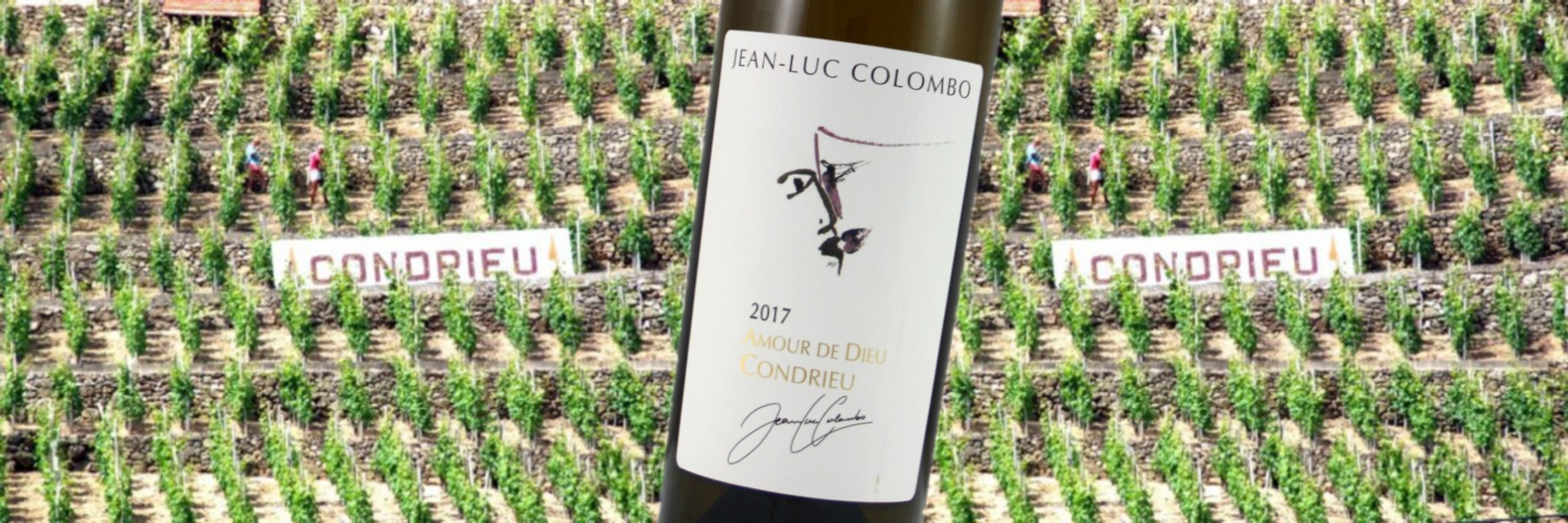
[Vineyard Photo Credit: MULHACEN, CC BY-SA 3.0, via Wikimedia Commons]
The tiny appellation, right at the northernmost limits of the Rhône Valley, was first established in 1940 and is situated just south of the town of Vienne, squeezed between the red-wine making areas of Côte Rôtie and St. Joseph. Some of today’s top producers in Condrieu include Guigal, Georges Vernay, Yves Cuilleron, Chapoutier and Jean-Luc Colombo who all produce fantastic wines, priced between £30 and £100 a bottle.
Established in Cornas, in the early eighties, and renowned for his Syrah reds, Jean-Luc’s daughter, Laure, is now part of the winemaking team and her contribution is taking the wines to new levels of quality.
Frazier’s have recently listed the 2017 Jean-Luc Colombo Condrieu “Amour de Dieu” at £48/bottle which is described by “Wine Enthusiast” in a most mouth-watering manner:
“Aromas of toast, vanilla, preserved peach and caramel are heady here, lending flair to orange cream and honey on the palate. It’s rich and unctuous, silky in texture, but fringed by pleasing bitters. A beauty already, it should evolve positively through 2027." 94/100 Points.
Bring out the grilled lobster for this one, or simple white fish. Just don’t smother it in vinegar and ketchup!
Moving immediately due south from Condrieu, you arrive at Château-Grillet whose wine is listed by local 3-Star Michelin restaurants. If only the best will do…
Described as having: Minerality with freshness reminiscent of sea air and hints of mint. Floral elegance (rose, violet & lime blossom) and soft fruitiness (pear, pineapple & apricot) with accompanying warm, indulgent notes such as honey, nougat, hazelnut, vanilla, white truffle, or spices like saffron.
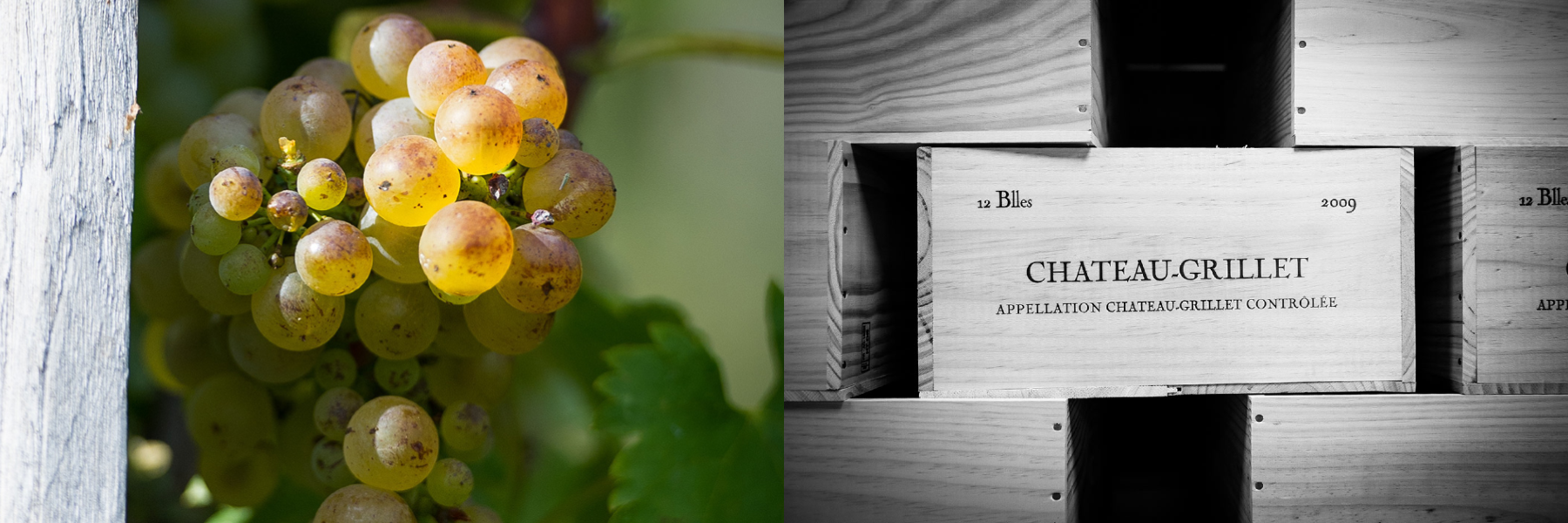
Château-Grillet, now under the same ownership as Bordeaux’s Château Latour and Burgundy’s Clos du Tart , often flirts with almost perfect tasting scores and is built for longer ageing than many other Viognier wines. It’s recommended to be consumed after 10 years’ ageing in bottle. With a south-easterly aspect, most of the steep, granite based vineyards (at 150-235m a.s.l.) enjoy a perfect microclimate. The original vineyards in the region date back to the 3 rd Century A.D. and it was the Romans who built the first terraced vineyards. Today, the property covers 3.5 hectares and there are 87 separate terraces with vines averaging 45 years of age. The appellation, 40km south of Lyon, was created in 1936, making it one of the earliest (and smallest) in France.
Drink your Château-Grillet with classic French food including foie gras, roast turbot, boiled lobster, scallops, or Bresse chicken in a creamy sauce. Also try with Asian cuisine, spicy foods and sweet-and-sour dishes. It’ll set you back around £400 a bottle, so don’t spill any!
Back to reality (and my, much lower budget), you can, of course, buy excellent, inexpensive French Viognier wines. Many years’ ago I used to sell Laurent Miquel’s “Cazal Viel” Viognier … a delicious example from the Languedoc for, I think, only £7.99 (!) and, more recently, the Hardy’s owned Domaine de la Baume “Elizabeth” Viognier for around £10 was a best-seller.
[Vineyard Photo Credit: Olivier Colas (https://olouf.fr), CC BY-SA 4.0, via Wikimedia Commons]
Frazier’s have, at £18, the biodynamic Chapoutier “La Combe Pilate” Viognier
“Delicate, with notes of bergamot and flint stone. Very fresh initially, dominated by the typical Viognier aromas. On the mid-palate, there is good balance between the acidic tension associated with its terroir of origin and the natural full body of the varietal and its ageing. The finish is savoury, bringing out the rustic and mineral overtones.”
Great with sautéed shrimp with ginger, rillettes tapas with salmon and lime, or cod tartare with radish.
It’s less than half the price of their Condrieu. A real bargain from a top-rated French producer.
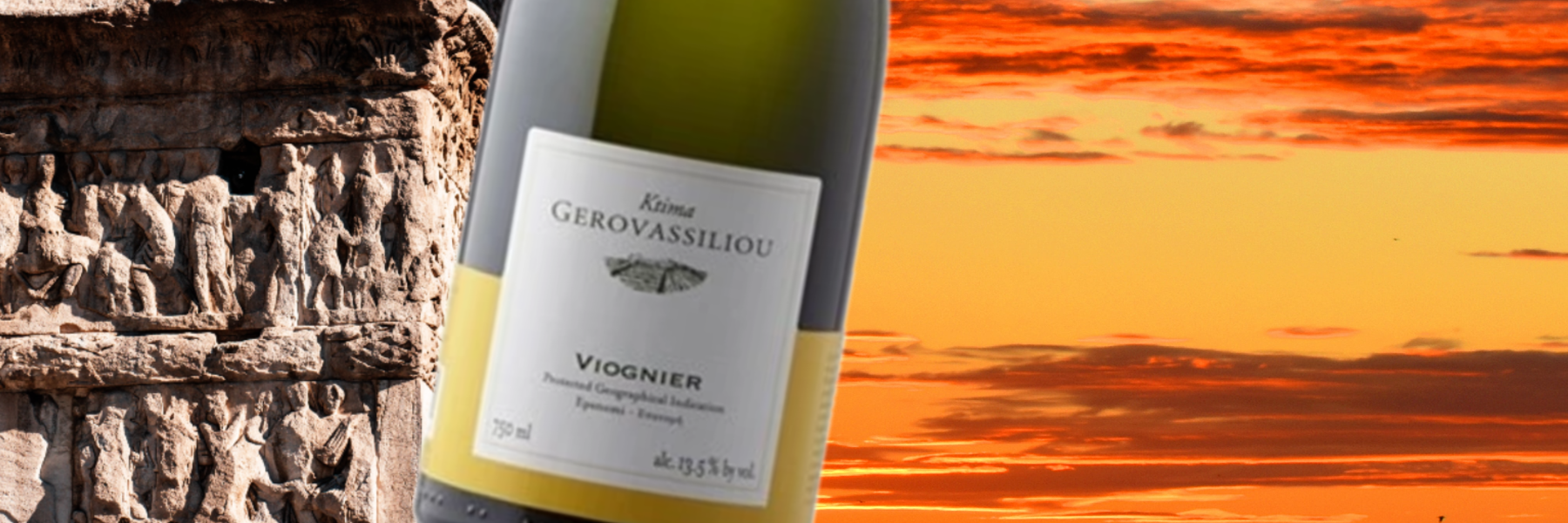
Spain and Portugal have a small number of Viognier growers, even Austria and Germany are warming to the idea (as the weather warms, too), but the most well-known European producer is probably the iconic Greek, Domaine Gerovassiliou in Epanomi, Macedonia. An oaked style of Viognier, the vineyards, which are just inland from the Aegean coast, were planted in the 1990s, and are cooled by sea breezes from the north (Thessaloniki), the west and from the south, helping to keep acidity in the grapes. A multi-Gold & Platinum award winning wine that’ll set you back around £20 a bottle. A good Viognier, but is it Greek?
Moving onwards, and further afield, to the “New World” wine countries, Viognier is growing apace in the Americas, has been in Australia for decades and has some great examples in New Zealand and South Africa. As I said earlier, it’s going to be the “next big thing”.
Three of the greatest Viognier made outside of France are from the USA.
Alban, Calera and Cayuse. You’ve probably never tried any of them, but if you see some, you need to splash out, as they’ll be some of the most remarkable white wines around!
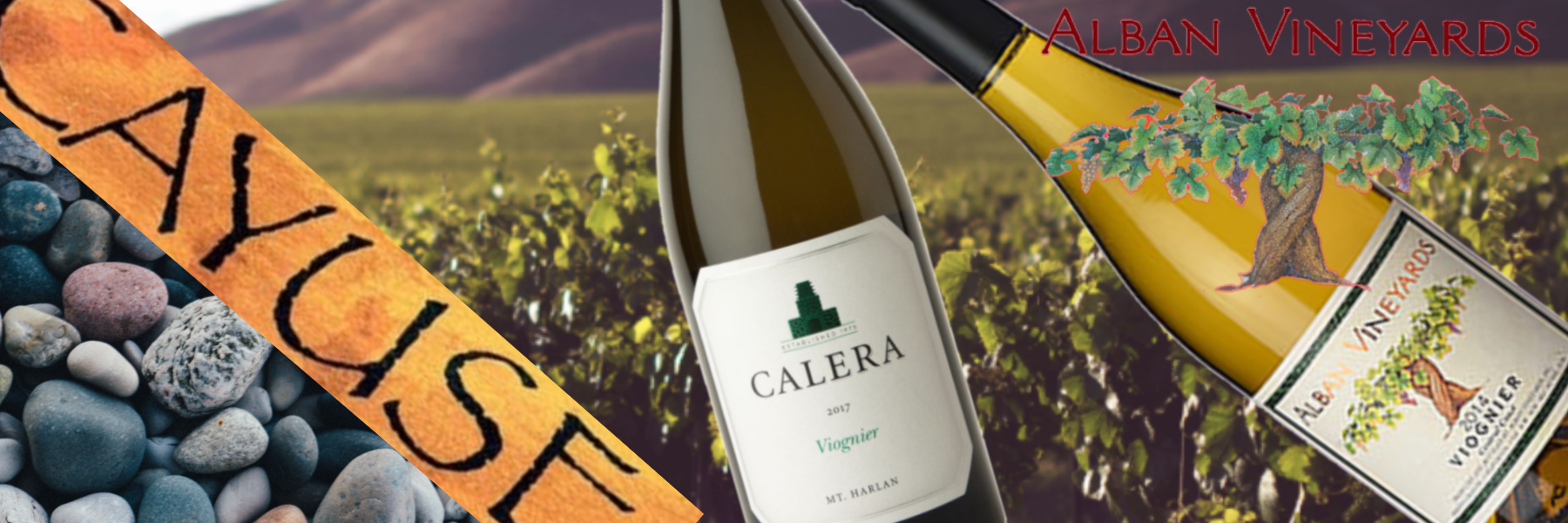
Some 30 years’ ago, I went on a unique wine visit to southern California. It wasn’t the usual Napa/Sonoma wineries north of San Francisco, but to coastal areas around Los Angeles. The likes of Santa Barbera, Paso Robles and Monterey come to mind and, amongst the sea of Cabernet and Chardonnay, some growers were experimenting with Rhône grape varieties. Not what the public wanted at the time, but wines that would turn out to be spectacular.
Firstly, to John Alban, who, decades later, still has no sign outside his winery entrance in Arroyo Grande (I checked on Google maps). There’s no shop, restaurant, or tourist visits. Just a house, winery and vineyards… and now sheep running around the local Edna Valley!
John’s inspiration was a glass of Condrieu and he decided to move there to study and help make wine in the region. He struggled to find anyone to take him on, even though he worked for free and, thankfully, he eventually got lucky. On his return to the USA, Alban spread the word of all things Rhône and now has a reputation for some of the most amazing Syrah, Grenache, Mourvedre, Viognier and Roussanne in the world. Regularly scoring 95-99 points from many critics, all of the Alban wines are worth their £50-£100+ price tag. Hard to find wines, but worth tracking down.
I almost forgot… the sheep. They’re used to keep down the weeds in the vineyards and they also eat the bugs on the leaves that could harm the vines. Naturally, organic deposits are a benefit to the soil!
Secondly, a winery I’ve not visited, further north in the Hollister Hills, but still south of San Francisco, you’ll come across Josh Jensen’s Calera vineyards, which are found at over 2000 ft altitude and are some of the highest (and coolest) in California. The Mount Harlan AVA, itself, is just inland from Monterey Bay and, with its limestone soil, also produces superb Chardonnay and Pinot Noir. Now part of “Duckhorn” (stocked by Frazier’s) you might be seeing some of these Calera wines on the list in the near future if you ask William very nicely.
Their Viognier offers a more “lemony” citrus flavour profile to the usual peach/apricot/jasmine and is likely to set you back around £40 a bottle. Not too bad a price for the “good stuff” from the USA.
Finally, there’s Cayuse.
Started by a French man from a Champagne making family, a “field of stones” at Walla Walla, in the south of Washington State, was first planted in 1997. Christophe Baron happened to see what he thought was land that looked remarkably similar to the “galets roulés” found in Châteauneuf-du-Pape. Every local thought he was mad to plant vines as there was literally no soil. Lots of pebbles, washed down by the Columbia River, over deep, solid basalt bedrock. But it worked!
Renowned for wines including the “Bionic Frog” & “Flying Pig” Syrah, the “Cailloux Vineyard” Viognier is the only white produced at Cayuse.
All the vineyards are farmed biodynamically and the Viognier wine is now fermented in a combination of “concrete eggs” and stainless steel, with no oak use. The style here has a very saline note and is more about the complex, floral aroma, depth and texture on the palate. Thrilling!
Critic, Jeb Dunnuck, considers this to be the best American Viognier and says, “It’s flat out gorgeous… smokin’ good Viognier” and is often rated 93-96 points.
With prices from £150 to £500 a bottle, it’s another USA producer that is only going to be on my wish list and not (yet) in my glass. One day…
Heading to the southern hemisphere, you’ll find plenty of inexpensive Chilean & Argentine Viognier that will make it onto supermarket shelves, or you could try Frazier’s Los Coches selection for good value. Only £7.45/bottle for this one.
Australia has long been a source of some excellent value Viognier and Yalumba’s Organic at £11.99/bottle has always been a popular wine, but if you want the best, then you might be tempted (I would) to try some of their top-of-the-range Virgilius at £41.50/bottle
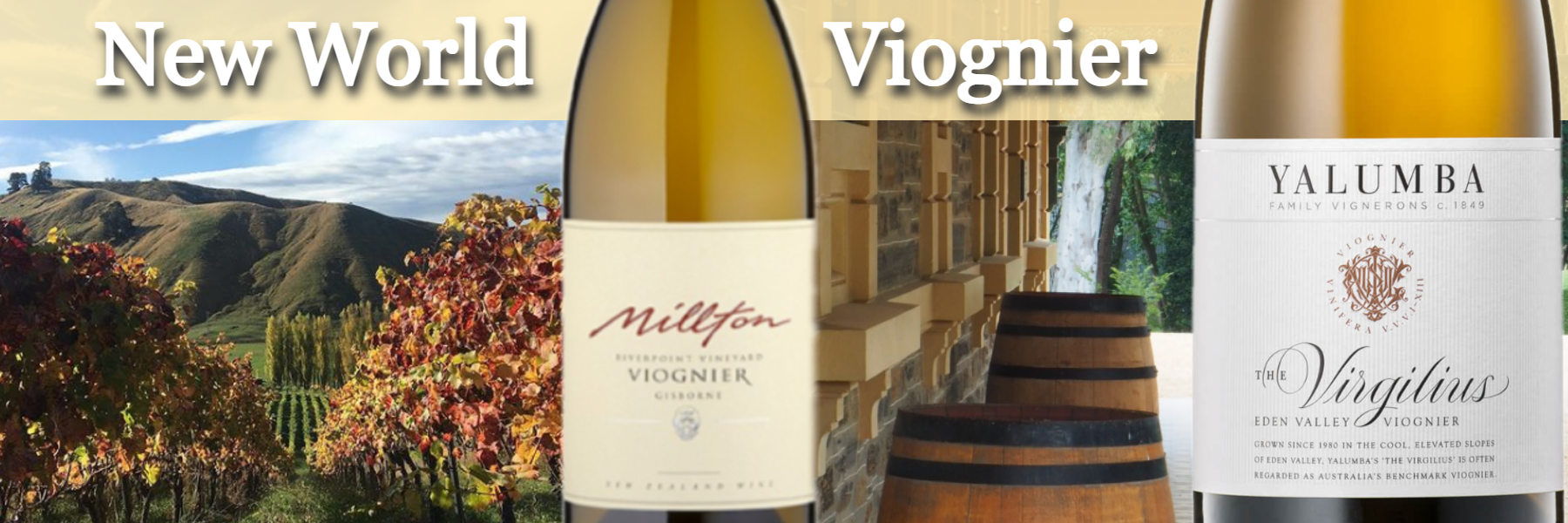
The vines are grown at altitude in the cool, Eden Valley to the east of the famous Barossa Valley. “Wild yeast” fermentation in old French oak barrels adds layers of texture to the wine. The nose has intense aromas of early season just picked apricots, cardamom, white pepper and fresh ginger. Lifted ginger spice is layered on the palate with mineral sourdough like texture and complex apricot and almond savouriness. The trademark Viognier lusciousness of the palate is clearly evident in this wine. It is complex while at the same time showing purity and restraint that will unwind slowly in the glass and take the imbiber on a sensory journey. A real food wine, or you can just sip and luxuriate in its depth and complexity whilst watching “Master Chef” on the TV.
New Zealand also has Gisborne producer, Millton, who, not making a Sauvignon Blanc (!), specialises in wines such as their “Riverpoint Viognier”, and other white varieties, Chenin Blanc, Riesling & Chardonnay. New Zealand’s first organic/biodynamic winery was created in 1984 by James and Annie Millton near the banks of the Te Arai River. Multi-award-winning wines that should be more widely distributed. Their Viognier is described as follows:
“Bristling delicacy, buoyed by a noted mineral edge. Poached pear and warm croissant give a spiced and sappy appeal. The salinity sings the proximity of the vineyard to its maritime environment. We consider the aromatic delight of Viognier will enhance and partner foods high in Umami flavours.”
Look out for some new-style Millton wines in a future “Discovery Case” selection at Frazier’s.
Dry River, in Martinborough, is another source of fantastic quality aromatic New Zealand whites including their very rare Viognier. Small production, but perfect for special occasions.
Not cheap at £35+ per bottle. His reds (Syrah & Pinot Noir) are nearer £50 each.
My visit, when Professor Neil McCallum was still the owner, saw nine of us try his amazing wines while squeezed into his lounge, overlooking the vineyards. A privilege to taste a great winemaker’s range. The whites, from Pinot Gris and Gewurztraminer were equally as good. Incredibly rich texture and length.
Bob Campbell M.W. said of the 2014 vintage: "Rich, ripe Viognier with orange blossom, apricot, wildflowers and Oriental spices. Big, concentrated and powerful wine with mouth-filling flavours and an almost chewy texture. High alcohol of 14.5% heightens the sense of voluptuousness and adds warmth to the lengthy finish. The wine really evolved as it sat in the glass and will certainly benefit from decanting." 95/100 Points
If you’re not too worn out by all this “virtual globe-trotting”, my final selections are from South Africa Eagles’ Nest (Constantia), Lismore (Greyton) and Arendsig (Robertson).
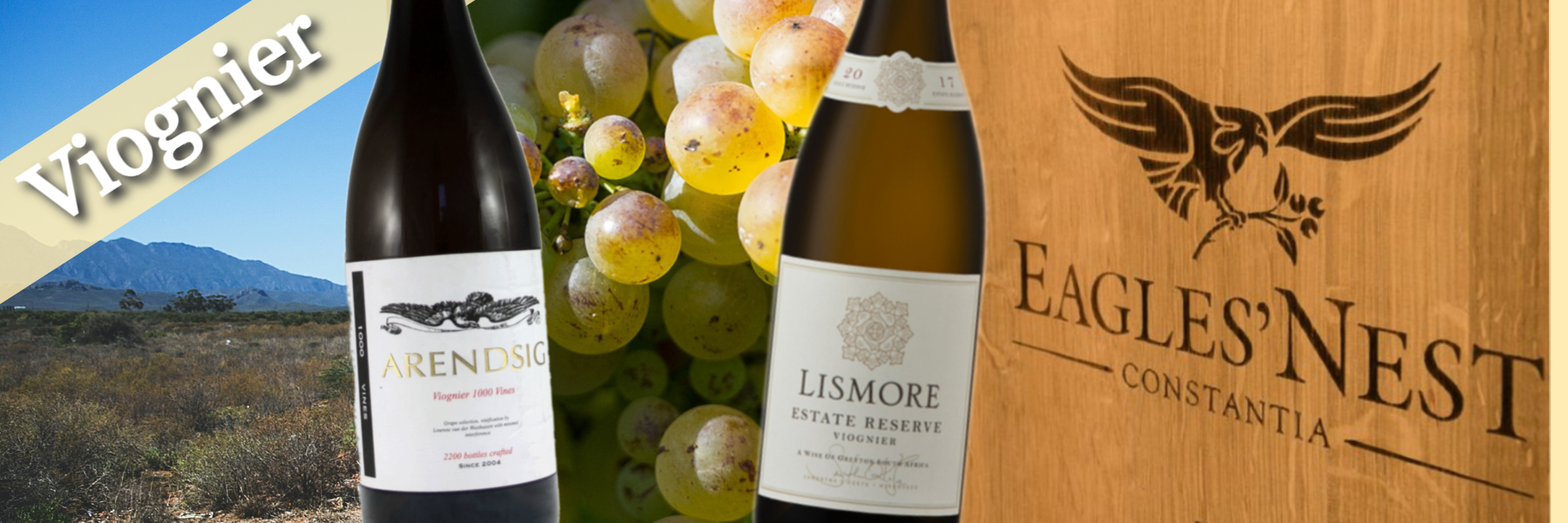
Geographically, the spectacular Constantia lies behind Cape Town on the rear slopes of Table Mountain. The cold waters of the Atlantic Ocean at Hout Bay are a short distance to the west. It used to be a remote area but, today, the urban sprawl is knocking at the door of all the vineyards. There’s no room for expansion, so these wines are never going to be huge brands.
Originally part of the Groot Constantia estate, Eagles’ Nest is planted on some of the steepest slopes in South Africa. Specialising in Shiraz, but not co-fermenting (as in many Côte-Rôtie red wines), the stand alone white Viognier is a rare wine. With only around 6 acres under vine the opportunity to try some of this wine is never going to be a common place occurrence.
It’s hand-picked, whole-bunch pressed and barrel fermented in mostly old French oak (80%) with 20% new wood. With a flavour profile more at the citrus & lime end of the spectrum, the “no malolactic” wine-making approach gives a high acidity suitable for a long life.
For more than 10 years it’s hardly ever dropped below 4.5* (out of 5) from the South African “Platter Guide”. Other critics score well over 90 points, year after year. It’s that good! Around £25 in the UK.
On my first visit to Cape Town (in 1992) no-one made Viognier; the vineyards didn’t exist yet. Driving to Constantia was a trip through beautiful countryside ending with the striking vineyard scenery at Klein Constantia. A nice Sauvignon, by the way, and their even better “Metis” is in the cellars, now.
Over a decade later, my second trip never quite happened. After landing at the airport and reaching the hotel, a morning visit to the area had to be abandoned as I spent the time in Stellenbosch trying to find a doctor’s surgery (not alcohol related!), and I had to rely on the other group members’ glowing reports of tours and plentiful wine tastings. I need to go back and try them once more.
Lismore Estate, in Greyton (Overberg),is another fairly new producer with Californian, Samantha O’Keefe, being the driving force, here. Over 200km east of Cape Town, Lismore produces two excellent Viognier wines.
The “Age of Grace” uses fruit sourced mainly from growers in the cold Elgin region and the “Estate Reserve” is, obviously, all from her own vineyards. Elgin has a longer ripening period (3-4 weeks more) than other areas in South Africa and gives fruit with extra acidity and freshness. Something that is often lacking in many poor examples of Viognier which can be too “fat” on the palate.
I’ve been to Elgin, and I can assure you that a very cool wind whips in off the distant sea at a considerable pace; and that was in the summer time. I wouldn’t want to visit in the winter!
How does the wine taste? It has a perfume of honeysuckle and orange blossom and a textured palate of apricot, kiwi and pineapple. All for around £20 a bottle. Sounds good to me.
The Wine Advocate praises the wine by saying: “They are lighter styles of wine that are stunningly beautiful”.
Both of Sam’s wines are barrel fermented (with the “Age of Grace” incorporating a portion of trendy “concrete egg” aged wine), and the “Estate Viognier” is given the full Burgundian treatment with more new oak and lees contact.
You will pay a lot more for this bottle. £35-£40 each. Approaching the price of a decent Condrieu.
Lismore describe this wine as being: “Rich, lush and decadent. Honeysuckle, peaches and dried apricot with a lingering saline and citrus finish. A clean fresh acidity supports the extravagance of the nose and the palate.”
Neal Martin rated the 2017 vintage 96/100 and Tim Atkin MW gave 95/100 for the 2018.
All of the estate’s vineyards are dry-farmed and the vines are planted at altitude on the lower slopes of the Riviersonderend mountains. Unfortunately, in early 2020, there was a severe wild-fire in the area and much damage was caused. Try to find these wines if you can. They’re worth the money.
My final South African selection is from Arendsig in Roberston.
Located even further inland than Lismore, Arendsig was established in 2004 by Lourens Van Der Westhuizen and the vineyards are situated on the fifth-generation family farm in the Breede River Valley.
I’ve tried a couple of vintages of this Viognier and, in my opinion, it’s hard to beat.
A beautifully balanced, layered wine, with aromas of spring blossom and jasmine and initial, rich flavours of peach and apricot, followed by crisp acidity and a mineral texture, finishing with a touch of honey, but no sign of sweetness on the palate.
Fermented with natural, wild yeast, and no enzymes, the wine is aged for 10 months on its lees in old, French oak barrels and the resulting production is tiny, with only around 1000-2000 bottles a year being made. Available now for only £18.99 a bottle at Frazier's. It’s too cheap!
Most producers will quote production in thousands of CASES. This is just in BOTTLES!
So, to sum up. Viognier can be an exciting style to try at sensible prices, but you can buy some seriously delicious wines if you feel like splashing out, maybe once in a while.

***NEWS FLASH*** It might be "fake news" but Trump's (biggest and most awarded) winery in Charlottesville, Virginia, makes a Viognier. $28 a bottle direct from the vineyard. Sorry, but no wine is exported. You'll have to go there. Oh well, maybe not the "next big thing" (Trump or the wine?)... TBC

